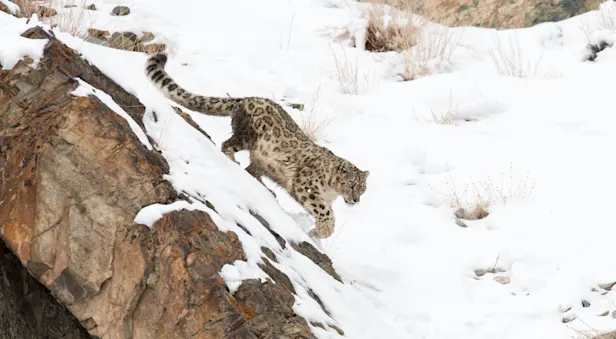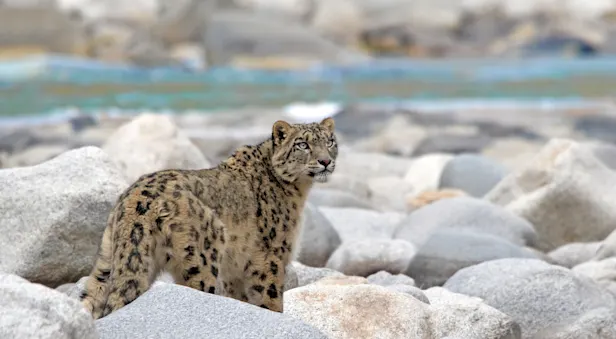Know Before You Go
Snow Leopard Facts | Himalayas Wildlife Guide
The snow leopard is the ghost of the Himalayas. They are elusive and extremely difficult to see without the help of trained spotters. Many snow leopard researchers spend much of their careers without ever laying eyes on one of these spectacular cats, but that is largely because they are restricted by their research protocols. We, fortunately, have the freedom on our trips to go where we have the best chance of seeing them.
Because of the difficulty of seeing them in the wild, much of the research that has been done on snow leopards has been based on evidence such as scat, hair and “scrapes,” which are scent marks left by the cats to broadcast their presence to competitors. They prefer to avoid other snow leopards, so these markings are left frequently across their ranges.
While of course it is far more exciting to see an actual snow leopard than just a pile of scat, from a research perspective this can be preferable. An impressive amount of data can be gathered now with DNA analysis without influencing or disturbing their natural behaviors.
These powerful hunters can take down prey three to four times their weight, and thrive in areas with abundant bharal, urial and other goats and sheep. While they will occasionally enter a corral of domestic livestock and kill the animals within, efforts to better secure these corrals have led to a dramatic reduction in conflict between snow leopards and communities.
Snow leopards are capable of amazing feats of acrobatics as they pursue their prey across the precipitous cliffsides of their mountain habitats. They use their long tails to balance themselves while leaping as far as 20 feet in a single bound! These thick tails also store fat which is critical for survival in their extreme environments. Their huge paws also help them to float across snowy terrain, and their relatively short legs keep them stable and close to the ground while climbing.
Interestingly, snow leopards are genetically closer to tigers than to other leopards.


























